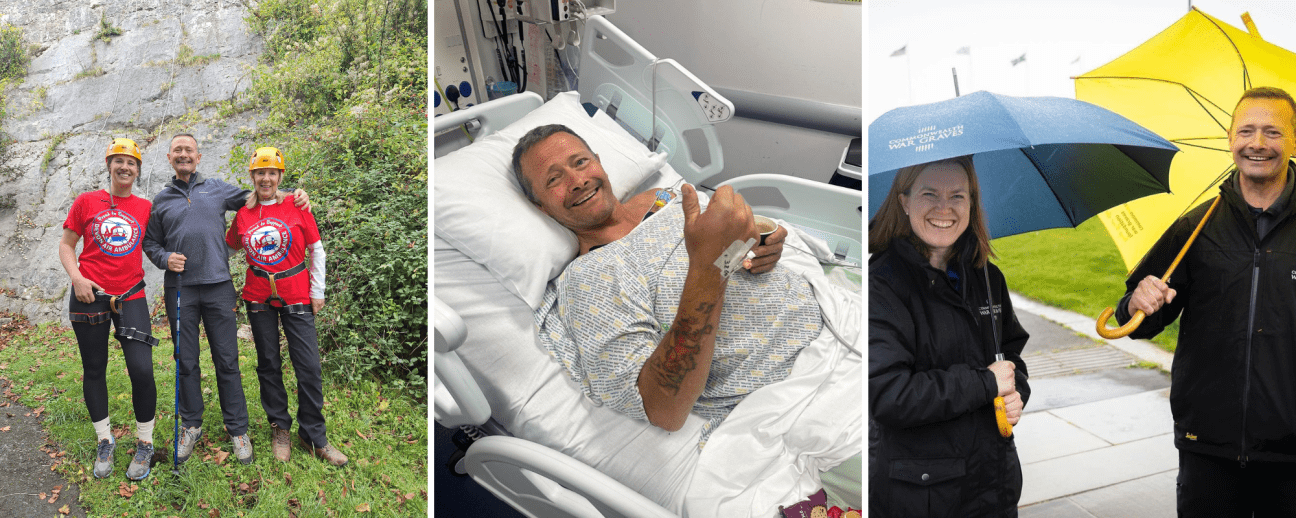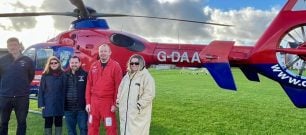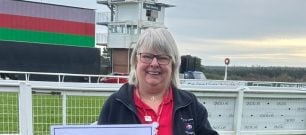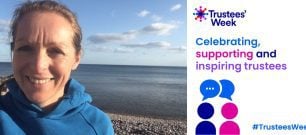
Following a crash on his enduro bike, Steve found himself alone and in pain wondering how he would survive
Steve Stewart, a former soldier and officer in 29 Commando, is no stranger to hard work, risk and endurance. However, in August this year whilst training on an enduro bike for two upcoming challenges, he faced an entirely different test of endurance and strength that would test all his military training. Steve said:
‘I had a relatively slow speed crash, probably 25mph, in a green lane on Dartmoor, near Widdecombe in the Moor. I’m not exactly sure what happened, but suddenly and without warning I’d lost control of my bike and violently crashed into a dry-stone wall. I remember it vividly, directly hitting the wall with my head, shoulder and chest, all on the left side, and the impact was horrendous.’
Steve found himself completely alone, sat upright against the wall with his bike leaning beside him. With his heart rate elevated, he suspected he might have been experiencing a heart attack and tried to remain calm to assess his own injuries and the situation he was in.
I now know I had broken my femoral head (right leg), 9 ribs, had a punctured lung and a broken scapula on the left side as well as a broken right hand!
Calm under pressure
Remaining as calm as possible in the circumstances, Steve carefully removed his helmet and retrieved his mobile phone. However, being in a remote area of Dartmoor, he found he had no signal. Steve recalls how he felt in this moment:
‘The time was 10am on a Saturday morning and I remember thinking this is not good as the lane I’d crashed on was not well used and I could be here for a quite a while… or even die here if I couldn’t somehow get myself some help. I had a choice – waiting for someone to come by, which might never have happened, so there was a very real possibility of me dying during the night with shock or hypothermia, or I should try to move myself and possibly survive.
I decided I needed to try and get out of the remote lane. I was sort of penned in by my bike, so I pushed it away from the wall to free myself. I then retrieved my wallet, two snickers’ bars, my waterproof out of my tool bag and my camelback water carrier. I planned to try and get down to the farm that I knew was at the end of the lane, if I could.’
Steve would face many obstacles and challenges in getting himself to safety including large farm gates, all with a multitude of broken bones. Amazingly, his adrenaline and military training kicked in and he was slowly but surely on the move, albeit in a lot of pain.
‘With the gate open, I then tried to shuffle down the lane, absolute agony! My leg was just flopping around from side to side from the hip, and my enduro boot seemed to weigh a ton so I decided I had to get it off. This took an agonisingly long time, but I eventually got it off and set off again, having only moved a few inches. My leg was still flopping around and seemed to weight a ton in itself. Who would have thought that a broken leg would be so heavy!
‘I retrieved a tow rope from my tool pack and tried to tie my broken leg to my good leg before attempting to move down the lane again. After around 1.5 hours, I had only covered 20 meters. As I sat there exhausted, I again thought that I wasn’t going to make it.’
Help from horseback
Now fearing the worst, Steve spotted a horse rider in the lane where he’d crashed. She hadn’t noticed him yet but was looking down at his crashed bike and discarded helmet, boot, gloves and tool pack. She immediately looked down the lane to find Steve and asked if he was alright. Explaining the predicament and the lack of telephone signal, the two decided that she would ride down to the farm and call for help, but first she would have to get past Steve on her horse in the narrow lane. Steve said:
‘As she rode by, she said don’t move and he won’t trample on you. I was very anxious as she rode past and left me alone. Several minutes later though, a farmer turned up on a 4×4 quad to inform me that an Air Ambulance was on the way and that he would have to leave me alone to guide them in when they arrived. Again, I was alone in the lane.
Surprisingly, after a painstaking two hours, I was still full of adrenaline, and I then heard the unmistakable sound of a helicopter. Several minutes later I saw the paramedics walking up the lane towards me and at that point, I knew I’d be in good hands and my chances of surviving had got a whole lot better. I slumped over completely exhausted but answered all their questions and even remembered my wife’s phone number before they got down to their business of removing my riding gear and administering drugs.
Two weeks of recovery
Steve was conveyed to hospital where he underwent four operations and spent two weeks in recovery before being released to continue recovering at home with his family.
Last week I celebrated my 62nd birthday, which in my bleakest moment on that fateful day in August, I was doubtful I’d make. The seriousness of my injuries could have been deadly, and without the quick response, treatment and professionalism of the Devon Air Ambulance crew and my subsequent transportation to hospital, I may not have made it. My family and I will be forever grateful for their service.
A way to give back
Having previously served at Plymouth’s Royal Citadel, Steve’s wife and daughter along with his former colleague, Rebecca Smith, signed up to take part in DAA’s first ever Daring Descent Abseil event alongside the 29 Commando Regiment Royal Artillery on 12th October to raise funds and awareness, Steve’s way of giving back to the charity that saved his life.
It’s thanks to our supporters that we can continue to respond to patients in need across Devon and beyond. We welcome your continued support.



